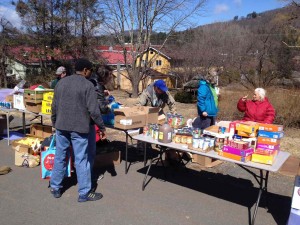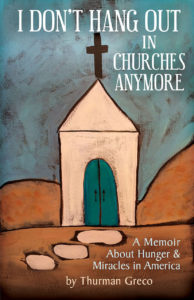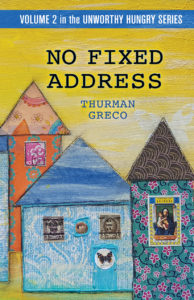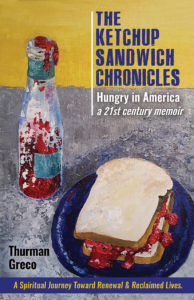Supermarket Abandonment
Woodstock is a food desert. Hard to imagine, isn’t it? Woodstock lacking in anything. After all, 60% or so of Woodstock’s residents are weekenders with homes in the city. They venture up on weekends, hang out and entertain their friends with foods coming from the Sunflower, Sunfrost, the Cub Market. The main ingredient for their meat dishes most often comes from the well stocked Woodstock Meats.
But, what about the rest of the crowd who live here 7 days per week? The lucky ones with working automobiles shop at Hurley Ridge Market on 375 in Hurley, the Price Chopper in Saugerties, or one of the other chains in Kingston: Shoprite, Hannaford’s, Adams Fairacre.
Higher income locals also shop at the Sunflower, Sunfrost, Cub Market. Additionally, they shop in Saugerties or Kingston at Mother Earth’s.
These upscale shoppers, both locals and weekenders, focus their purchases on all natural, organic. Hudson Valley grown food. Popular buzz words are organic, non-GMO, Paleo, free range, antibiotic free, gluten free, hormone free, and…you get the picture.
Those who are not vegetarians or vegans also shop at Woodstock Meats and maybe at Adams Fairacre. The point here is that these shoppers participate in consumption trends associated with their lifestyle and health. And, with the upscale foods available in Woodstock, they’re able to get anything they want, whenever they want it.
The not-so-lucky live a different way. The Woodstock resident without a working automobile shops at the CVS, Rite Aid, Cumberland Farms.
The Woodstock resident without a working automobile gets Sunflower products by diving in the dumpster behind the store and by shopping at pantries located at Family of Woodstock, Holy Ascension Monastery, and in the Woodstock Reformed Church. Some homebound Woodstock residents benefit from Sunflower’s benevolency with produce and bread donated regularly to Meals on Wheels. These meals are delivered to their homes throughout the week for $3.00 per meal.
In years past, the Grand Union was extremely popular in Woodstock. Community groups held raffles, Girl Scouts sold cookies, and neighbors visited with one another while shopping. After snow storms, everyone went to Grand Union, shopped for milk, butter, and eggs, and swapped snow stories.
It was indispensable for the elderly and those without cars. In 2001, the Grand Union closed and CVS got the space. In typical Woodstock fashion, residents took to the streets with demonstrations. But, it was to no avail. On April 11, 2001, Woodstock became a food desert.
The result? Many local people walking on the sidewalks of Woodstock today don’t have enough $$$ to purchase a sufficient supply of nutritious food. Food insufficiency is also known as food insecurity. More people than we realize deal with this situation on a daily basis.
Without access to nutritious food, they suffer from overconsumption. When a person eats too much of the wrong thing and too little of the right thing, hunger, poverty, and diseases such as diabetes overlap and connect.
For those of you who believe the fault is entirely that of the hungry, poverty stricken person: please remember that the community is as much to blame as the individual. People eat what they have access to. They don’t eat what they can’t get. Less prestigious stores in Woodstock offer too few choices of healthy and affordable food. They offer packaged food rich in fat, sugar, salt, preservatives, artificial coloring, artificial flavoring, pesticides.
As the wealthy and privileged shop for the best available food and adapt the latest food and health trends to their diets, the lower, less privileged class is left further and farther behind. They will probably never catch up.
Thank you for reading this blog/book.
Please share this article with your preferred social media network.
Please leave a comment.
Don’t forget to join the email list.
Peace and food for all.
Thurman Greco
Stewart’s Shops and the Milk Coupons
“Hi Bob. How’s it going today?”
“It’s going good here. There’s a long line outside here at the pantry. This place is really growing.”
“Bob, do you ever make it over to Stewart’s on 28?”
“Yeah, why?”
“Well, I’ve got something nice for you today if you can get there. I’ve got a milk coupon for you if you can use it.”
“Sure.”
This conversation was repeated many times in the pantry this week. Sometimes the shopper had transportation to get to Stewart’s. Sometimes the conversation didn’t go quite so well. In that case s/he didn’t get a coupon. The nearest Stewart’s Shop is on 28 near the Woodstock turnoff so those whose transportation is limited to bicycles and walking can’t make it that far down the road.
Solid gold, these coupons. For one thing, we distribute cereal and it’s really nice if we can offer milk to put on the cereal. This week we offered coupons to 100 families who visited our pantry!
Stewart’s Shops are located within a 150 mile radius of their headquarters in Saratoga Springs, NY which means that food pantries in Upstate New York are blessed with being near a company with a serious commitment to community support. A family and employee owned business, Stewart’s donates 5% of its profits to charity.
This year, 2014, Stewart’s is giving away over $2.5 million in monetary and product donations to non profit organizations in the 30 counties where they have stores.
Even though millionaires are fast becoming billionaires and the stock market is soaring, we really are living in difficult economic times…so much so that charitable donor organizations are as stressed as the non profits who solicit to them daily.
Stewart’s is well aware of the long term problems we face as we serve the hungry. Stewart’s also knows about the stresses non profits experience as we work to alleviate hunger in our area. That makes Stewart’s a real angel to food pantries and soup kitchens.
Apart from offering a sincere “Thank You” from all of us in the industry, there are several things we can do to show our appreciation to a company which is committed to feeding the hungry.
We can shop at Stewart’s when we purchase gas, milk, and bread.
We can support Stewart’s on Social Media.
So, I ask you to: Like Stewart’s on Facebook. Follow Stewart’s on Twitter.
The next time you shop for food or gas at a Stewart’s shop, can you take a moment to thank the employees of the store where you shop? A simple sentence recognizing the company and employees for their generosity is extremely important to all of us.
Thank you for reading this blog/book.
Please refer this article to your preferred social media network.
Please send a comment.
Don’t forget to join our mailing list.
Peace and food for all.
Thurman Greco
Awaken The Connection
PANTRIES CAN BE POWERFUL PLACES. Everyone coming to a pantry needs healing of one kind or another. People come to pantries for just that healing.
The Reservoir Food Pantry offers an opportunity for all of us to find a place of connection and wholeness within ourselves.
This connections makes us aware that what we think and do matters, that our feelings and intentions are important, and that we are not alone or separate. We are not above or below others.
THESE REALIZATIONS CAN BE INCREDIBLY POWERFUL. Once we become more aware, we feel more responsible for our inner growth and for all life around us.
Feeding people and allowing others to feed us makes us know that we are all one huge family on this planet. Knowing this concept can wake up the world.
JOIN US. Work in the pantry, shop in the pantry. Participation in the pantry will allow you to experience deeply your connection to all living beings.
YOUR COMMITMENT TO A PANTRY WILL ALLOW YOU TO JOURNEY DOWN A PATH WHERE WE CAN ALL BE ONE AND DEEPER COMMUNICATION IS A REALITY.
Thank you for reading this blog/book.
Please share this article with your preferred social network.
Please leave a comment.
Don’t forget to join the email list.
Peace and food for all.
Thurman Greco
Dear Neighbor
THIS WEEK WAS GLORIOUS IN THE RESERVOIR FOOD PANTRY. Although the pantry was so cold that the pens froze at the sign-in book, we didn’t even mind. After all, I’m experienced with working in a cold space. The Woodstock Reformed Church was never heated either. So what. It’s better for the produce, don’t you agree?
But, back to the glorious part…our first ever mailer went out this week. Or, rather, the whole project was completed on Tuesday when I took the last load of letters to the Kingston Post Office to the Bulk Mail room.
What a wonderful feeling that was! We’ve been working for months on this mailer. Robyn Daugherty addressed envelopes on many pantry afternoons beginning about last March.
Bonnie Lykes and Felice Castellano took up pen and envelope throughout the summer months. Then, other people joined in at the table and we finally finished the job this week.
Finalists included Louise Cacchio, Garrett O’Dell, Susanne Traub, and Barbara Freisner.
Prasida and I signed the letters.
The entire project was a huge leap of faith. After all, the Reservoir Food Pantry only opened in September, 2013, on Route 28 in Boiceville, when volunteers delivered food to 21 homebound households.. With little to no fanfare, we’ve been growing steadily. The need for a food pantry in our area was great when we opened, and it’s even greater today.
WE SERVE OVER 900 PEOPLE MONTHLY. 40% of those served are homebound residents in the area unable to come to the pantry. Families and individuals visiting the Reservoir Food Pantry weekly come from many different circumstances. Some are single parent families. Some work more than one job and are still unable to buy food after they pay the rent and get the gas to go to work. Some have lost their jobs, their homes. Still others are struggling with life-altering circumstances, be it a health issue, an accident, the loss of a family member, or other personal disaster.
The Reservoir Food Pantry was founded by local residents, Sean Bigler and Bonnie Lykes. We’re fortunate to have the support pf volunteers from the community. There are no salaried employees. We nourish the hungry, both in our pantry and by delivering food to those unable to visit the pantry. We offer canned, packaged food, bread and fresh produce regularly. We also offer a limited amount of items of dignity.
THE PANTRY NEEDS YOUR HELP. Your generosity is appreciated and your gift will be used to directly help neighbors. Please make your check payable to the Reservoir Food Pantry, and mail it to P. O. Box 245, Boiceville, NY 12412.
If you prefer to donate by credit card, please visit our website at www.reservoirfoodpantry.org/donate.
Reservoir Food Pantry, Inc., is a registered 501(c)3 non-profit charity and your contribution is tax deductible to the extent allowed by law.
Peace and food for all.
Thurman Greco
Thanks for reading this blog/book.
Please refer this article to your preferred social media network.
Please make a donation using the donate button on the blog.
Please send a comment.
Don’t forget to join our email list.
Peace and food for all.
Thurman Greco
Do you work at a pantry? Do you shop at a pantry? Do you donate to a pantry? – Part 6
THERE’S NO WAY TO GET AROUND IT.
Efforts by pantries and soup kitchens to connect with hungry people make them inefficient.
A person may spend several hours on the phone just trying to find a pantry open on a specific day that s/he has transportation. And, calling ahead is important. Often the list a person is working with is inaccurate/out of date.
MOST IMPORTANT: PANTRY SHOPPERS NEED TO DETERMINE IN ADVANCE IF THEY’RE GOING TO BE ADMITTED TO THE PANTRY THEY’RE TRYING TO SHOP AT.
On the Food Bank front, no one can call the Food Bank of Northeastern New York or the Food Bank of the Hudson Valley disorganized or inefficient. The delivery systems, quality management, efficient consumer response, and sensitivity to the needs of the different agencies is above reproach.
How the employees at these 2 Food Banks can soldier on year after year is beyond me. I visit a Food Bank weekly.
I PLACE, ON AVERAGE, 2-3 ORDERS MONTHLY. A Reservoir Food Pantry volunteer is in the produce area of the food bank every Monday. The employees are always courteous, friendly, professional. Never has an order been botched. This is an amazing record when one considers there are only 80 employees (some part time) for 1028 agencies.
Inefficiencies are seen in the enormous labor involved in a food drive. And…the Food Banks thrive on food drives.
FOOD DRIVES TAKE AN ENORMOUS AMOUNT OF WORK ON THE PART OF MANY PEOPLE. An “army” is needed to advertise the food drive, determine and monitor the collection points, motivate people to give the food to the hungry and then take it to the collection points.
Once that happens, the food is assembled at a central point for sorting. Finally, after much handling, this food ends up on its way to a food pantry. Many people involved in a food drive project are volunteers.
Fortunately the HPNAP people in New York State instituted client choice guidelines in 2008 so volunteers no longer spend hours filling bags of food to be distributed to the shoppers.
When food bags were distributed, people would be given bags of food:
which they possibly could/could not cook based on their kitchen facilities.
and which they possibly could/could not eat based on their health issues.
With client choice, the food collected is much more efficiently distributed. ( Shoppers take home the food they can use.
ON THE SUPERMARKET FRONT, THERE ARE COMMUNITIES, NEIGHBORHOODS, AND RURAL AREAS THROUGHOUT OUR COUNTRY WITHOUT GROCERY STORES. We call these areas “food deserts”. Food pantries and soup kitchens replace disappearing supermarkets in inner-city and rural locations.
In a different system:
one where adequate food stamps are distributed to hungry people,
one where an adequate minimum wage meets the housing, transportation, and food needs of a household,
many people now lined up at food pantries and soup kitchens could shop at the store of their choice and purchase the food they want and can eat. There would be profit making businesses in these inner city and rural areas.
But, then, what would happen to all of us who spend our lives volunteering and working so that others might eat?
How could we continue to reduce landfill clutter? How could we reduce dumpster and composter costs?
How could we continue to recycle all the wonderful produce if there is no place for it to go?
FOOD PANTRIES AND SOUP KITCHENS FUNCTION SUCCESSFULLY BECAUSE COSTS ARE MINIMAL. Everything is donated:
Volunteer time
Recycled food which has been diverted from a landfill
Pantry Space.
Thank you for reading this blog/book.
Please refer this article to your preferred social media network.
Please send a comment.
Don’t forget to join the email list.
Peace and food for all.
Thurman Greco
Do you work at a pantry? Do you shop at a pantry? Do you donate to a pantry? Part 5
UNREACHABLE
“Hi Chris! How’s it going today? Are you busy or what in here? This place is jammed! ”
“Busy as always Thurman. We’ve got melons and a lot of tomatoes today. We’re out of the special HPNAP produce.”
“Listen Chris, it doesn’t matter. Prasida and Francine and I always find something wonderful and magical here every time we come to the Food Bank.”
Prasida and Francine make it their life’s work to get the best possible produce from Latham to Boiceville every Monday morning. These 2 women know food. Each week is a food quest for them.
THIS IS EXACTLY THE SAME SITUATION FOR THOSE SEEKING FOOD FROM A FOOD PANTRY.
And, of course, fresh produce and bakery goods are only part of the picture…Much of what happens is unplanned, haphazard, erratic. No one really complains. After all, we’re getting food, aren’t we? And, none of us has the authority, resources, responsibility, or ideas to improve the system.
IT BOILS DOWN TO THIS: WE AT RESERVOIR FOOD PANTRY:
GET WHAT WE GET
WHEN WE GET IT
HOW WE GET IT.
OUR CLIENTS GET WHAT THEY GET WHEN THEY CAN MAKE IT TO THE PANTRY.
WHEN THEY CAN NO LONGER MAKE IT TO THE PANTRY, WE GET IT DELIVERED TO THEM SOMEHOW.
LARGE DIFFERENCES EXIST IN CLIENT ACCESS TO PANTRIES AND SOUP KITCHENS. There are no soup kitchens in the Reservoir Food Pantry area. If a person out here needs to go to a soup kitchen, the best opportunity is to go to Woodstock on Mondays, Wednesdays, and Fridays at 4:30 pm. That’s when the Daily Bread Soup Kitchen in the back building of Christ Lutheran Church is open. Chances are good that if you don’t live in Woodstock and don’t have the wherewithal to put together a meal at your home (wherever and whatever that is), you aren’t going to have the wherewithal to make it over to Woodstock either.
AVAILABILITY HAS A LOT TO DO WITH ACCESS. Our pantry distributes food 3 days weekly but it’s only open on Mondays in Boiceville. If, for example, you live in West Shokan and have no transportation on Mondays, you aren’t going to make it to our pantry. Unfortunately, this also holds true in urban settings as well.
KINGSTON HAS MANY PANTRIES AND SOUP KITCHENS. There again, you need to be able to get to them when they’re open. Some people simply can’t make it over.
Take, for example, Motel 19, a shelter located at the intersection of Routes 28, 209, and 87 on the edge of Kingston. Without a bicycle or car, a person is looking at a long hike.
Imagine being a young mother with an infant or child trying to get to a grocery store, doctor’s office, pantry or soup kitchen. Imagine walking down a highway with this infant or child in your arms as cars travel faster than 45 miles per hour.
What if there is rain, freezing rain, or a snow storm?
Shoppers in rural areas routinely face transportation difficulties. People travel significant distances. Some walk, bicycle, take the bus, or hitch rides from friends and neighbors.
THE RULE IS THIS: THOSE MOST IN NEED HAVE THE LEAST ACCESS TO TRANSPORTATION.
Reservoir Food Pantry has been designated a mobile food pantry. We deliver food to half of our clients. One stop is a low rent complex for seniors. Another is an intergenerational low rent complex. The remainder of the stops are at individual residences – apartments, homes, rooms, whatever.
As challenging as it is for shoppers to get to the pantry, it’s equally difficult for the pantry volunteers to get to the Food Bank. At Reservoir Food Pantry, we’re fortunate to have dedicated volunteers and a reliable vehicle sold to me by Sawyer Motors at an excellent price. Remove those 2 factors, and the result is a mess.
SOME FOOD PANTRIES HAVE LIMITED FINANCIAL DONORS AND VOLUNTEERS. Some have transportation issues. They may lack produce, baked goods, and other foods necessary for a balanced diet.
The structure of our Food Bank/Food Pantry system is unable to ensure those in the greatest need will have access to food.
The Food Banks of Northeastern New York and the Hudson Valley are focused on developing innovative ways to get the food to the people. A designated truck is driven on a regular route to grocery stores, farms, food manufacturers, and other locations to pick up food and take it to the Food Bank. It is then sorted and made available to pantries.
THE FARM STANDS AT PEOPLES PLACE AND COMMUNITY IN KINGSTON ARE PRODUCTS OF THIS EFFORT.
The Food Bank of the Hudson Valley conducts daily mass food distributions throughout the area where a food bank driver in a semi delivers 12 pallets of food to a central point predetermined by a schedule. The food is then distributed to pantries, soup kitchens, shelters, individual households. Communities receiving these food distributions regularly include communities such as Lake Katrine, Gardiner, Kingston.
We have much needed food going to hungry people. I only wish more of it were going to the more rural locations.
Now that I’m writing a wish list, I wish more pantries would open on evenings and weekends. This is difficult to do, I know. Reservoir Food Pantry is not yet open weekends.
I also wish pantries could give up some of the identification requirements.
JUST FEED THE PEOPLE, YOU KNOW?
Thank you for reading this blog/book.
Please refer this article to your preferred social media network.
Please leave a comment.
Don’t forget to join the email list.
Peace and food for all.
Thurman Greco
The Food Bank of the Hudson Valley has a critical need: Volunteers!
 Recent cuts in SNAP (formerly the Food Stamp Program) are forcing more and more people to turn to food pantries and soup kitchens to help feed their families. To meet the increasing need, the Food Bank of the Hudson Valley is finding new sources of donated food. As more food comes into the Food Bank, dedicated volunteers are working overtime to sort it for distribution to nearly 400 emergency feeding programs.
Recent cuts in SNAP (formerly the Food Stamp Program) are forcing more and more people to turn to food pantries and soup kitchens to help feed their families. To meet the increasing need, the Food Bank of the Hudson Valley is finding new sources of donated food. As more food comes into the Food Bank, dedicated volunteers are working overtime to sort it for distribution to nearly 400 emergency feeding programs.
NOW, MORE THAN EVER BEFORE, THE FOOD BANK NEEDS OUR HELP. Both groups and individuals are urged to volunteer to help get this food to those in need. Right now, there are thousands of pounds of food in the warehouse waiting to be prepared for distribution.
YOU CAN VOLUNTEER AT A DAY, EVENING, OR WEEKEND SHIFTS. CALL TROY MARTIN AT 845-534-5344.
Or, email him at tmartin@foodbankofhudsonvalley.org.
Thank you for reading this blog/book.
Please send a comment.
Please refer this article with your preferred social media network.
Don’t forget to join our email list.
Peace and food for all.
Thurman Greco
Do you shop at a pantry? Do you work at a pantry? Do you donate to a Pantry? – Part 4
PANTRIES OPERATE ON WHAT’S AVAILABLE, NOT WHAT WE NEED.
When I think of the monthly food order…three words come to mind:
Donations
Surpluses
Leftovers
THAT’S WHAT WE GET. The items are lined up on the form emailed to us twice weekly. The form lists available foods in fine print. If the email has fewer than 20 pages, I know I’m in trouble.
For me, the most important section of the list is the USDA section. This category usually takes less than a page. No matter. This is the free food I can order each month.
At the Reservoir Food Pantry, we’re allowed 2 cases of whatever items they have on hand. And, I go for it all. This is what I order first.
Right now, USDA staples include small boxes of raisins, canned cranberry sauce, and canned beans. We’ve had these items for about 3 months running. The volunteers who haven’t been working in the pantry long wonder out loud why I keep ordering these items over and over. What they don’t see, because they haven’t been doing this long enough, is that these items will soon be absent from the list and may never reappear.
IN CONTRAST TO GROCERY STORE ITEMS, WHEN STOCK GETS LOW, A PERSON SIMPLY ORDERS MORE.
SURPLUS FOOD IS AVAILABLE UNTIL IT’S NOT. Surplus food, by its very nature, is only temporary. Nothing is permanent in a pantry. It’s not even long-term. The moral of this story is that, in the pantry world, all good things come to a final end.
Even though I know all good things come to an end, what I cannot say is “when”. The stuff will just, one day, no longer be available.
THIS GIVES THE WHOLE SYSTEM A FRAGILE TONE.
THIS ALSO HOLDS TRUE FOR THE GOVERNMENT FUNDING WE RECEIVE. The numbers of hungry shoppers keep rising. The unemployment funds and food stamps available to the hungry keep shrinking. I expect to wake up one day and read in the New York Times that some senators and congressmen just cut off all the food money for the hungry and homeless.
WE OPERATE OUR PANTRY ON DONATIONS. No salaries are paid at the Reservoir Food Pantry. We ask for every penny we receive and hold food drives monthly to supplement our HPNAP food grant.
There is no funding for overhead, supplies, equipment, gas and auto repairs, insurance. The fact that we’re all volunteers gives the pantry effort a temporary feel. People show up and do the job they do until they don’t show up anymore.
I’m happy with an all-volunteer army although some regular volunteers have questioned my feelings over the years. Everyone working at the pantry is there for a reason. Some don’t even know why they’re doing the job they are doing until later when they look back on that part of their lives.
WE ALL SEEK HEALING AND A PANTRY IS A WONDERFUL PLACE TO HEAL. Volunteers tell me this is an important part of their lives. People shopping at the pantry help out as well. We receive a sense of satisfaction from giving something to others. Reservoir Food Pantry is in a gorgeous area. The food is the best we can find. What more can we ask for?
I’m not threatened by unpredictable funding, precarious food supply, and increasing demand.
We don’t turn anyone away at the Reservoir Food Pantry. We know what it’s like to be hungry.
Peace and food for all.
Thank you for reading this blog/book.
Please refer this article to your preferred social media network.
Please send a comment.
Don’t forget to join the email list.
Thurman Greco













